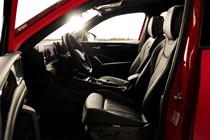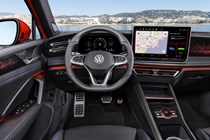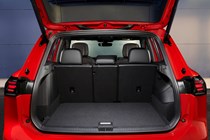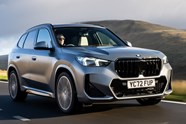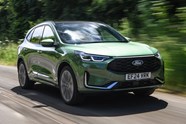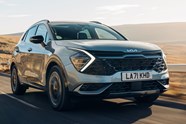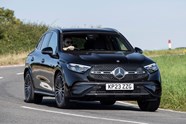
Volkswagen Tiguan eHybrid review
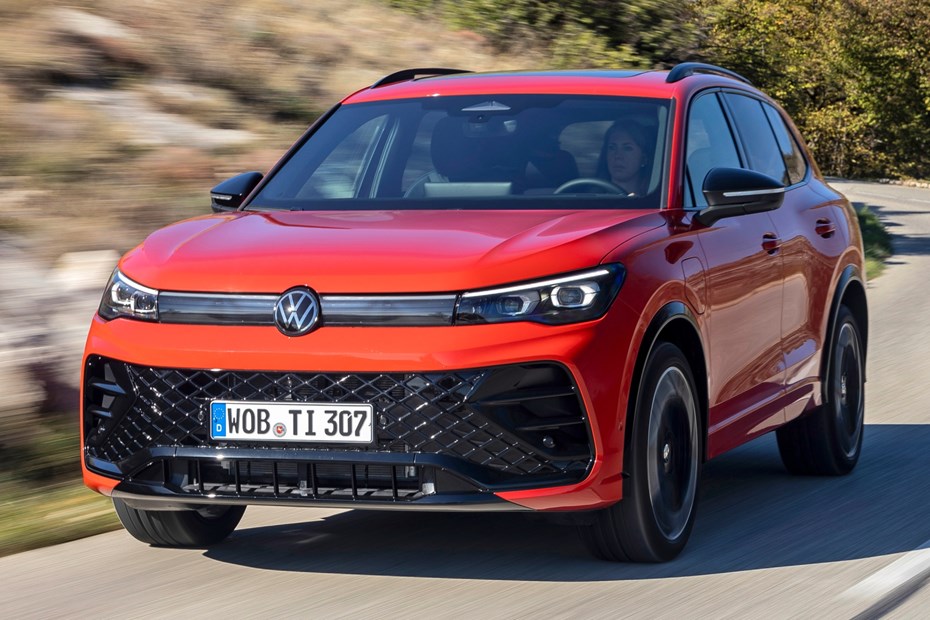
At a glance
| Price new | £42,840 - £48,360 |
|---|---|
| Used prices | £31,576 - £43,290 |
| Road tax cost | £620 |
| Insurance group | 27 - 31 |
Get an insurance quote with

|
|
| Fuel economy | Not tested to latest standards |
| Number of doors | 5 |
| View full specs for a specific version | |
Available fuel types
Hybrid
Pros & cons
- Long EV driving range
- Low company car tax
- Flexible interior
- Reduced boot space compared to petrol and diesel Tiguans
- Firm ride
- Interior could be more user-friendly
Volkswagen Tiguan eHybrid rivals
Overview
There wasn’t a great deal wrong with the old Volkswagen Tiguan eHybrid, but neither was it one of the best plug-in hybrid SUVs. Its all-electric range was middling so it sat in a higher company car tax bracket than rivals, and there were swifter options, too.
The second-generation eHybrid sorts that with an official EV range of up to 77 miles and a potent 272hp version if you go for R-Line trim. You can still have a tamer 204hp variant if you’d rather, and this is available in all but entry-level Tiguans. Both get a new hybrid system with a fresh 1.5-litre engine and bigger battery for improved efficiency.
Prices for the plug-in hybrid (PHEV) start at over £40,000, with the R-Line 272 getting awfully close to £50,000. Thanks to a few options, our UK test car sits at £57,945, That puts it up against a whole range of premium and mainstream plug-in rivals including the Ford Kuga, BMW X1 and the big-selling Kia Sportage. If you’re considering a petrol or diesel Volkswagen Tiguan, that gets its own separate review.
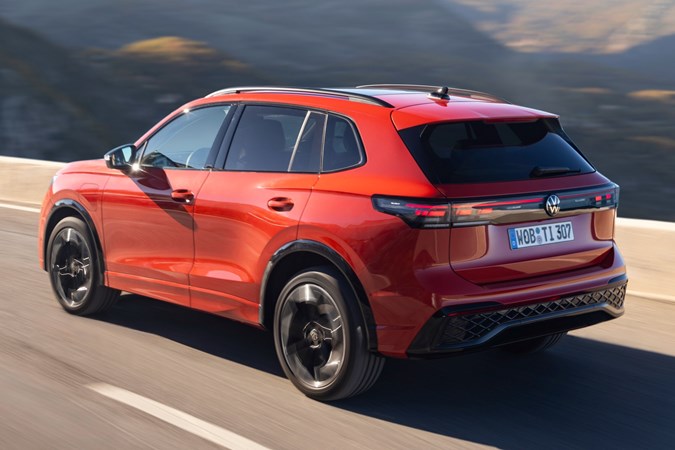
To find out if the Tiguan eHybrid is now a serious contender, we’ve driven it in Europe and lived with it for a week in the UK. After all, driving on quiet roads in the sun is nice, but trying to squeeze two giant cardboard boxes into the boot for a tip run is a more useful real-world ordeal. To find out more about how we test cars at Parkers, have a look at our explainer page.
What’s it like inside?
There’s little to separate the Tiguan eHybrid from other models behind the wheel. There’s a new switch to unlock the fuel filler, some new screens for the two digital displays, and that’s about it. The 12.9 or 15.1-inch touchscreen is Volkswagen’s latest generation that is a massive improvement on its predecessor that debuted in the ID.3 electric car.
You still get the sliders at the screen’s base to adjust temperature and the stereo’s volume, albeit now backlit so they’re visible at night. Crucially, the infotainment’s operating system has more responsive hardware, larger, clearer icons and a row of configurable shortcuts at the top of the screen. It’s therefore easy to rest your fingers on the back of the screen and quickly turn off any annoying driver assists with your thumb, for instance.
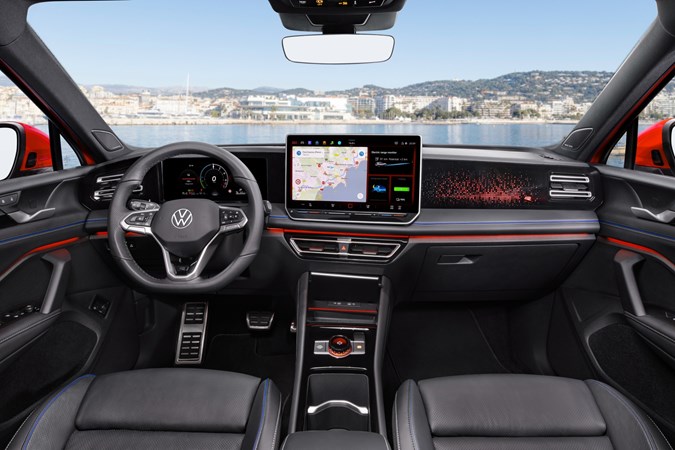
Physical controls are limited, and include a volume knob that switches to control drive mode when you give it a prod, and a full suite of steering wheel buttons. We’d prefer more, including some for the heater, but that’s increasingly rare these days. Quality is good with plenty of soft-touch plastic up front, great seats on most models, and a pleasing action to those few physical controls.
Nobody struggled for headroom up front despite our test car coming with a panoramic roof, and the seats go back a long way to accommodate long legs. All trims get a sliding and reclining rear bench with a 40/20/40 split as standard that proved very helpful for disposing of a couple of big boxes for an Isofix child seat and base.
The boot wouldn’t quite close, so I pulled the bench forward a couple of inches so they’d just slot in whilst leaving the rear seats usable. When it is time to fold the rear backrests, all but entry-level models get handy levers in the boot so you don’t have to nip round to the back doors.
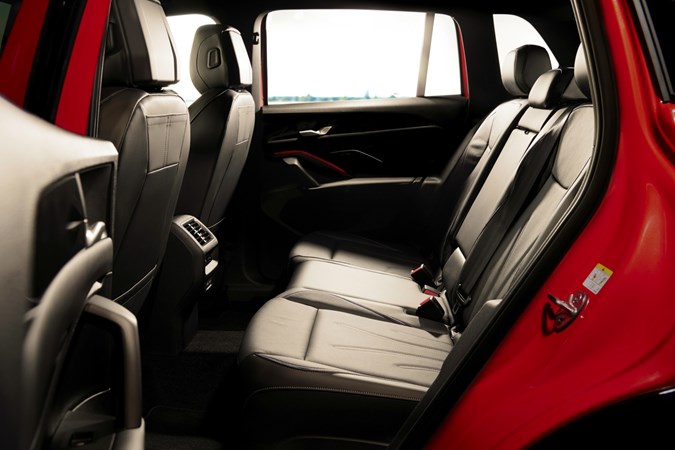
Rear legroom with the bench all the way back is sufficient for six-footers, with headroom sufficient even with the panoramic roof. All bar base Tiguans get a rear armrest, with centre rear passengers having to deal with a higher seat and a hump in the floor between their feet.
Boot space shrinks to 490-litres compared to the non-PHEV Tiguan’s 652-litres. In practice, the boot floor is level with the loading lip with no option to lower it, but you still get some underfloor stowage for cables. There’s certainly enough room for a pushchair with plenty of space to spare.
Volkswagen Tiguan eHybrid engines
The Tiguan eHybrid’s powertrain has received a serious overhaul, and is now available in two power outputs. In both cases, there’s a 1.5-litre turbocharged four-cylinder engine coupled to a six-speed dual-clutch automatic gearbox with an integrated 115hp electric motor. This is fed by a 19.7kWh battery that’s significantly bigger than its predecessor’s.
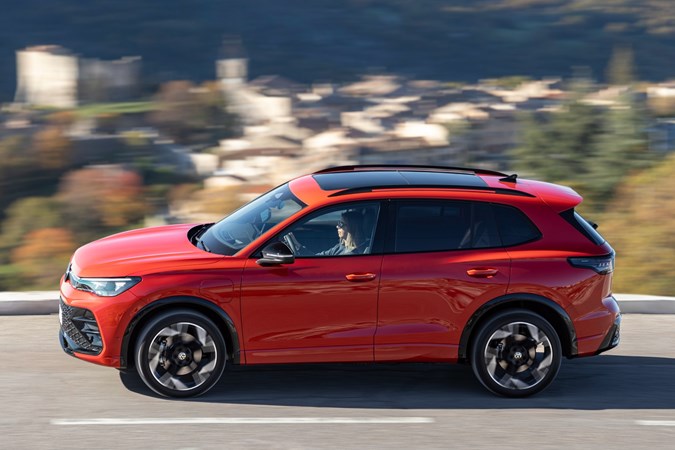
All but entry-level trim is available with the 204hp eHybrid, while the 272hp version is only available in sporty R-Line trim at the top of the range. While the less powerful hybrid’s petrol engine produces 150hp the punchier option’s has 177hp, helping it get from 0-62mph in 7.2 seconds. That’s a full second faster than the 204hp eHybrid.
What’s it like to drive
We’ve spent most time in the 272hp R-Line with adaptive dampers and driven it on a variety of UK roads. Comfort mode is the default on startup, but even this has a firm edge to the ride. You can set the dampers to an even softer mode in individual mode which helps takes a bit of that initial sting out, although body control is looser as a result.
Sport mode isn’t so firm as to be unusable, although we rarely ventured into this stiffer setting as it felt perfectly eager in Comfort. Quick, precise steering is backed up by good front end grip and pleasingly little body roll for a family SUV. It certainly hides its bulk well, proving happy to be hustled along an A or B road.
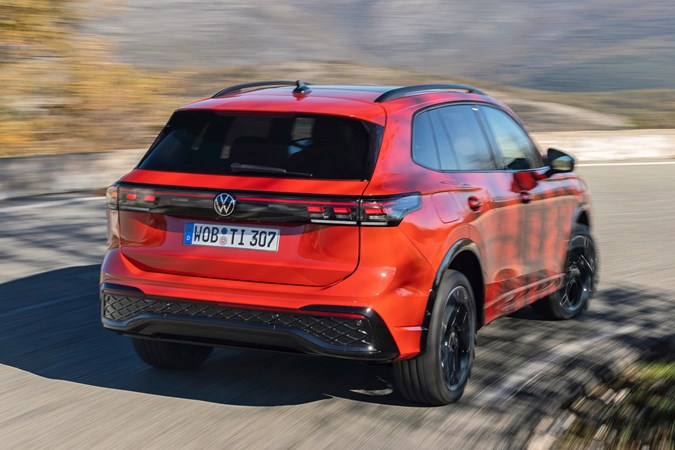
The hybrid system isn’t as smooth as what you’ll find in a Toyota RAV4 or Ford Kuga, but gearshifts are quick and it responds to a request for sudden acceleration without too much delay. In fact, the 272hp eHybrid is almost too keen, with the car torquesteering across the road at times. We’d save the money and go for the still reasonably brisk 204hp version. In both cases, performance in electric mode is more leisurely, if enough to keep up with most traffic situations.
Range and charging
According to offical WLTP figures, the Tiguan’s good for an all-electric range of up to 77 miles. That’s a seriously impressive number that comes with a low BIK rating and a price that’s on par with rivals. In practice, we managed mid-50s mpg on a mix of roads without trying too hard.
Charge rates are way up from the 3.6kW of the old model. You can now rapid charge at 50kW for a 26 minute 5-80% top-up, while an 11kW 0-100% fill takes two and a half hours. Expect to add around an hour for a typical 7.4kW home wallbox.
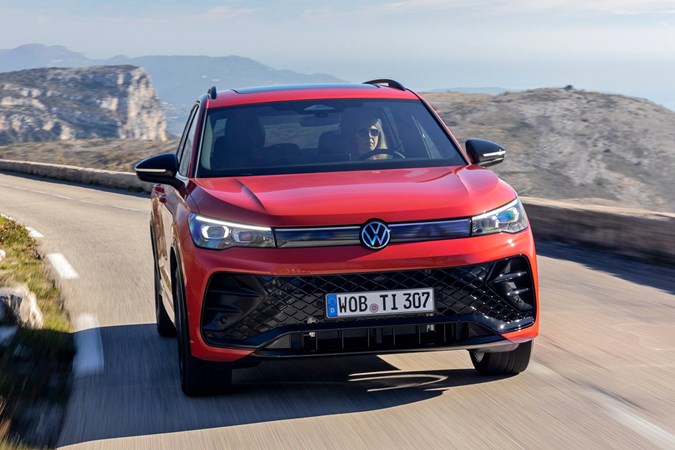
What models and trims are available?
All but entry level trim is available as an eHybrid, giving you the choice of Life, Match, Elegance or R-Line. As we’ve already mentioned, the 272hp version is R-Line only.
Life is worth considering for its 18-inch alloys, nicer seat fabrics, adjustable lumbar support, wireless phone charging, voice control, adaptive cruise, three-zone climate control and electrically folding mirrors. At the time of writing, we’d recommend Match trim, a value-packed option that costs just over £100 more but comes with loads of extra kit.
This includes an electric tailgate, keyless entry, upgraded LED headlights, tinted rear windows and roof rails. That’s a good chunk of the useful equipment that Elegance gets, with 19-inch alloy wheels, chrome trim on the front air intake, heated and massaging front seats, and a surround view camera. Until Match is no longer available – it’s usually a limited-run high-value trim that’s been applied to many models over the years – it’s hard to justify Elegance.
At the top of the range is R-Line. It’s the only way to get the 272hp eHybrid, while all versions get a sporty makeover. This includes big 20-inch wheels, more aggressive bumpers, velour upholstery, sports seats with heating and massage, and silver roof rails. We’d avoid it as it’s similar money to Elegance, but ditches handy equipment like keyless entry and the electric tailgate for those sporty looks. Click the navigation bar at the bottom of the page to read our verdict on the Tiguan eHybrid.










